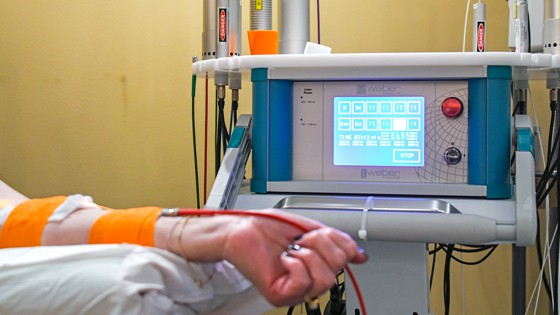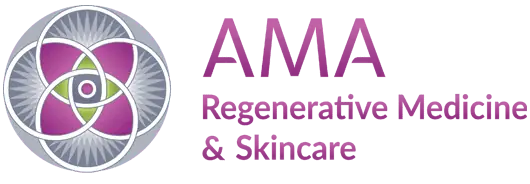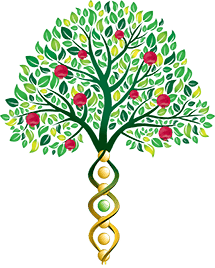In general, Photobiomodulation (PBM) and photodynamic Therapy (PDT) are two primary methods, which use light in medicine and dentistry.
Photobiomodulation uses low-level laser or LED light to induce healthy cellular activity including proliferation and repair.
Photodynamic Therapy uses low level laser or LED light combined with a photosensitizing compound (PS) to cause cell death.

A patient receives the “Rainbow” of colors with the intravenous photobiomodulation laser.
Phototherapy 1 – Photobiomodulation
Due to the fact that we do not yet fully understand the precise nature of light, as well as the physiological response to light, we consistently observe unexpected, inexplicable, and complex outcomes to the clinical use of PBM.
Thus, though light can be generated with exacting consistency, the physiological response to light can vary tremendously from patient to patient.
Thus, step-by-step protocols have yet to be developed that produce thorough, reliable, and reproducible results for most conditions.
What we do know is:
- Low-level energy of the lasers and LED light used clinically, are safe and easy to use without the fear of causing damage to the patient.
- Different frequencies of light target different internal cellular apparatus, which then stimulates different physiological responses.
- The cellular responses generated by PBM, are regenerative in nature, and can be used to modulate different physiological systems in healthy as well as sick patients, into a state of progressively improving health and vitality.
The Basic Principles of Photobiomodulation
Using a specific wavelength of light that is absorbed by certain internal components of healthy cells, vital metabolic activity, healthy and balanced cellular turnover, and internal cellular functions can be stimulated and enhanced.
In cases such as COVID with severe mitochondrial disruption the photons of the correct light will stimulate ATP production, providing the damaged cell with sufficient energy to repair itself.
Given the ubiquitous cellular damage caused by the COVID spike protein’s disruption of the Electron Transport Chain in mitochondria of otherwise healthy cells, and because of ischemic tissue damage caused by systemic inflammation, stimulating healthy cellular activity as well as proliferation might prove to enhance and accelerate a COVID patient’s recovery.
Phototherapy 2 – Photodynamic Therapy
Photodynamic Therapy (PDT) is a form of light therapy involving specific light, and a photosensitizing chemical substance that preferentially absorbs that light, that then interacts with molecular oxygen (O2) to generate high-energy oxygenated and toxic molecules, the cause the death of unwanted cells, such as microbial pathogens or malignant cells.
Basically, Photodynamic Therapy requires three elements.
- Specifically engineered light.
- A photosensitizing compound.
- The presence of oxygen.
The wavelength of the light source being used must be “matched” to the photosensitizer, which excites the electrons in the photosensitizer, which then transfers those electrons to oxygen which become high-energy, highly reactive, and highly cytotoxic (toxic to cells) “singlet oxygen”, which then produce high-energy free-radicals and/or “reactive oxygen species”.
Photodynamic Therapy is a 3-Stage Process
First, a photosensitizer, that is not toxic until it is stimulated by its “matched” light, is administered to the patient. Administration can take three different forms:
- Topically, usually as a cream.
- Systemically, by IV or orally.
- Locally, by injection directly into the lesion, such as a tumor.
Second, for reasons we don’t fully understand, a photosensitizer compound is characterized by its preferential attraction to damaged, diseased or malignant tissue, ignoring healthy normal tissue. During a specific period of time (“incubation”) a sufficient amount of photosensitizer will have been absorbed into the targeted tissue, while the body washes out the presence of the photosensitizer from normal healthy tissue. At the end of the incubation period, the targeted tissue is ready for treatment and is activated by exposure to the “matched” light for a specified period of time.
Third, the light dose supplies sufficient energy to stimulate the photosensitizer, without affecting the neighboring healthy tissue. The resultant cytotoxic “reactive and oxygen species” (ROS) kills the targeted cells.
Review of the Basic Principles of Photodynamic Therapy
For reasons that remain obscure, certain Photosensitizing compounds possess a powerful affinity for unhealthy cells, pathogenic microbes or specific components therein, especially but not limited to malignancy. For example: Methylene Blue is powerfully attracted to Malaria and is considered by many to be the perfect therapy to completely rid the patient from the infection.
Once administered to the body (IV) and given sufficient time to saturate the targeted cells (incubation time) the targeted malignant/pathogenic cells will retain the Photosensitizing compound, while healthy cells are able to clear themselves of the Photosensitizing compound during the “incubation” time.
The Photosensitizing compound must also contain the needed molecular components that when stimulated by a specific wavelength of light, are able to release the needed ROS, that will kill the malignant or pathogenic cells.
Photobiomodulation and Photodynamic Therapy in Treating COVID Related Issues
Regarding COVID, both of these modalities should theoretically be useful, perhaps even critically important if they can be combined.
1. We need to kill the virus as soon and as quickly as possible post infection. For this Photodynamic Therapy with a Photosensitizing agent that can target the virus, followed by its “matched” frequency (wavelength) of light that is absorbed by the Photosensitizing agent would destroy the virus.
- The patient receives an IV of the needed photosensitizing agent. An incubation period is employed to ensure that the PS agent has sufficiently penetrated all the tissues where the virus is lurking.
- At the end of the incubation period the “matched” light is administered to the patient. In cases of systemic infection, intravascular administration of the appropriate frequency of laser light will ensure the most effective exposure of the treated virus to the “matched” laser light.
- Subsequently, the energized Photosensitizing agent will generate ROS that are deadly to the virus.
Note: Ideally, in the case of an early onset of the infection, a properly constructed protocol that takes advantage of these properties will clear a patient of an entire viral load quickly, and before systemic damage is created.
Note: On the other hand, if the infection has been lingering for a sufficiently long period of time wherein systemic inflammation has caused ischemic organ damage, symptoms subsequent to the organ damage may persist long after the pathogen has been eliminated. See below.
- Once the virus has been killed, the patient may still experience many Long-Haul symptoms that persist for many weeks. This is due to the ubiquitous tissue and organ damage caused by the spike protein’s ability to invade the cells despite the absence of the actual virus. Once inside, the spike protein’s disruption of the Electron Transport Chain disables the cell from being able to generate sufficient energy to effectively repair itself and return its host organ to a healthy state.
Furthermore, because of ischemic tissue damage caused by systemic inflammation and the abnormal toxic clotting (also caused by the spike protein), restoring healthy cellular activity via the effect of PBM, that stimulates proliferation might enhance and accelerate a COVID patient’s recovery.
2. Ideally, a magical combination of the “right” Photodynamic protocol that successfully kills the COVID virus, followed by the ”right” Photobiomodulation protocol to heal and rebuild damaged tissue, would be the most effective way to heal COVID patients, especially those who postponed early treatment allowing the virus to proliferate unchecked causing extensive damage.
Another Example is Cystic Acne
ALA (5-aminolaevulinic acid) is spread on the effected skin and allowed to “incubate” for 45 min to 3 hours depending on the severity of the lesions. Skin cancers require longer incubation periods.
During the incubation, the ALA saturates the cysts, who because of their hyperactive cystic activity are also saturated with naturally produced porphyrins.
Thereafter, when the correctly “matched” blue light is shined on the treated skin, through a variety of reactions between the ALA the Porphyrins and the blue light, powerfully toxic ROS such as a singlet oxygen is created that will kill the cystic cells.
Photodynamic Therapy and Drug Resistant Pathogenic Microbes
As the list of drug resistant microbes continues to grow, their virulence also grows, as does the list of obsolete antibiotics.
In contrast, Photodynamic Therapy does not engage pathogens at the genetic level where resistance can be developed. Consequently, there is an increasing focus on developing new Photodynamic Protocols, including laser devices and novel photosensitizing compounds to which resistance cannot be developed.
A perfect example is the use of Methylene Blue as the photosensitizing agent of Photodynamic Therapy.
- Methylene Blue inactivates Zika virus and Sindbis virus.
- Methylene Blue + light inactivates West Nile virus.
- Methylene Blue + light reduces Ebola virus infectivity.
- Methylene Blue + light reduces Middle East respiratory syndrome virus infectivity.
- Methylene Blue + light reduces HIV-1 “to nondetectable levels”.
- Methylene Blue + light reduces Bovine Diarrhea virus “to non-detectable levels”.
- Methylene Blue + light reduces Pseudorabies virus “to non-detectable levels”.
- Methylene Blue + light reduces Hepatitis A virus.
- Methylene Blue + light reduces Porcine Parvovirus.
- Methylene Blue + light inactivates Enterovirus.
- Methylene Blue + light inactivates Flavivirus.
- Methylene Blue + light inactivates Herpes virus.
- Methylene Blue + light reduces Dengue virus.
Photodynamic Therapy, Photobiomodulation and Viruses
Among the many pathogens that can be targeted by PDT, viruses are perhaps the most vulnerable, as they depend on entering a host cell for survival and replication and can be inactivated by damaging the capsid or envelope molecules (lipids, carbohydrates, proteins) or internal molecules (nucleic acids).
Thus, many viruses can be treated via PDT, including papillomavirus (HPV), hepatitis A virus (HAV), and herpes simplex virus (HSV).
In general, it is believed that light energy excitation of endogenous microbial intracellular light receptors (chromophores), such as porphyrins and flavins is the mechanism of action that eliminates pathogenic microbes. Once excited, these receptors undergo energy transfer processes that lead to the generation of cytotoxic ROS which react with intracellular components resulting in photodamage and cell death by oxidative stress.
Additionally, the laboratory disinfection of biological fluids (plasma and blood products) by photo antimicrobials has been performed for decades and is a well-regarded technological application of these compounds.
For instance, extracorporeal photoinactivation of coronaviruses and other clinically relevant pathogens using methylene blue (MB)-mediated PDT has been reported.
Photobiomodulation has been used in the treatment of acute lung injury, pulmonary inflammation, and acute respiratory distress syndrome (ARDS), due to its ability to substantially reduce systemic inflammation while preserving lung function.
Though the mechanism is of yet unknown, Photobiomodulation is also effective in treating disseminated intravascular coagulation.
In Conclusion
According to current research, Photobiomodulation and Photodynamic Therapy employing lasers and LEDs are here to stay. The existing information appears to support the hypothesis that Phototherapy does not rely solely on coherence and high energy production to produce favorable physiological effects, but also on selective wavelength application, optimal absorption, and photo-activation.
The significant combination of Photodynamic and Photobiomodulation therapies listed above are evidence of light energy’s untapped promise in the realm of regenerative medicine. Further development of Phototherapy will provide widespread clinical application and acceptance of Photomedicine and have a direct, beneficial impact on mankind by radically changing the ways we manage cancer, acute and chronic wounds, inflammation, and antimicrobial resistance.
Learn More About Our Integrative, Metabolic & Regenerative Treatments
References - Read the Science Behind Phototherapy...
Everything on our website comes from from reputable publications, books and scientific journals, most of which are available on PubMed and other government websites. These include Meta-Analysis’, Randomized Controlled Trials, Clinical Trials, Systematic Reviews, Books and Documents. We encourage you to read the science, in order to separate fact from fiction, so that you can arrive at a full understanding of what is best for your body. We would be honored to be a part of that educational journey with you.
- Graeme Ewan Glass, BSc, MB, PhD, FRCS (Plast), Photobiomodulation: The Clinical Applications of Low-Level Light Therapy, Aesthetic Surgery Journal, Volume 41, Issue 6, June 2021, Pages 723–738, https://doi.org/10.1093/asj/sjab025
- Rosso MPO, Buchaim DV, Kawano N, Furlanette G, Pomini KT, Buchaim RL. Photobiomodulation Therapy (PBMT) in Peripheral Nerve Regeneration: A Systematic Review. Bioengineering (Basel). 2018 Jun 9;5(2):44. doi: 10.3390/bioengineering5020044. PMID: 29890728; PMCID: PMC6027218.
- Diogo, M.L.G.; Campos, T.M.; Fonseca, E.S.R.; Pavani, C.; Horliana, A.C.R.T.; Fernandes, K.P.S.; Bussadori, S.K.; Fantin, F.G.M.M.; Leite, D.P.V.; Yamamoto, Â.T.A.; Navarro, R.S.; Motta, L.J. Effect of Blue Light on Acne Vulgaris: A Systematic Review. Sensors 2021, 21, 6943. https://doi.org/10.3390/s21206943
- Vinh Van Tran, Minhe Chae, Ju-Young Moon, Young-Chul Lee, Light emitting diodes technology-based photobiomodulation therapy (PBMT) for dermatology and aesthetics: Recent applications, challenges, and perspectives, Optics & Laser Technology, Volume 135, 2021, 106698, ISSN 0030-3992.
- Mark Nestor, Anneke Andriessen, Brian Berman, Bruce E. Katz, Dore Gilbert, David J. Goldberg, Michael H. Gold, Robert S. Kirsner & Paul Z. Lorenc (2017) Photobiomodulation with non-thermal lasers: Mechanisms of action and therapeutic uses in dermatology and aesthetic medicine, Journal of Cosmetic and Laser Therapy, 19:4, 190-198, DOI: 0.1080 /14764172.2017.1293828
- Maharjan PS, Bhattarai HK. Singlet Oxygen, Photodynamic Therapy, and Mechanisms of Cancer Cell Death. J Oncol. 2022 Jun 25;2022:7211485. doi: 10.1155/2022/7211485. PMID: 35794980; PMCID: PMC9252714.
- Aroso RT, Schaberle FA, Arnaut LG, Pereira MM. Photodynamic disinfection and its role in controlling infectious diseases. Photochem Photobiol Sci. 2021 Nov;20(11):1497-1545. doi: 10.1007/s43630-021-00102-1. Epub 2021 Oct 27. PMID: 34705261; PMCID: PMC8548867.
- Songca SP, Adjei Y. Applications of Antimicrobial Photodynamic Therapy against Bacterial Biofilms. Int J Mol Sci. 2022 Mar 16;23(6):3209. doi: 10.3390/ijms23063209. PMID: 35328629; PMCID: PMC8953781.
- Gunaydin G, Gedik ME, Ayan S. Photodynamic Therapy-Current Limitations and Novel Approaches. Front Chem. 2021 Jun 10;9:691697. doi: 10.3389/fchem.2021.691697. PMID: 34178948; PMCID: PMC8223074.
- Algorri JF, Ochoa M, Roldán-Varona P, Rodríguez-Cobo L, López-Higuera JM. Photodynamic Therapy: A Compendium of Latest Reviews. Cancers (Basel). 2021 Sep 3;13(17):4447. doi: 10.3390/cancers13174447. PMID: 34503255; PMCID: PMC8430498.
- Gunaydin G, Gedik ME, Ayan S. Photodynamic Therapy for the Treatment and Diagnosis of Cancer-A Review of the Current Clinical Status. Front Chem. 2021 Aug 2;9:686303. doi: 10.3389/fchem.2021.686303. PMID: 34409014; PMCID: PMC8365093.
- Dompe C, Moncrieff L, Matys J, Grzech-Leśniak K, Kocherova I, Bryja A, Bruska M, Dominiak M, Mozdziak P, Skiba THI, Shibli JA, Angelova Volponi A, Kempisty B, Dyszkiewicz-Konwińska M. Photobiomodulation-Underlying Mechanism and Clinical Applications. J Clin Med. 2020 Jun 3;9(6):1724. doi: 10.3390/jcm9061724. PMID: 32503238; PMCID: PMC7356229.






























